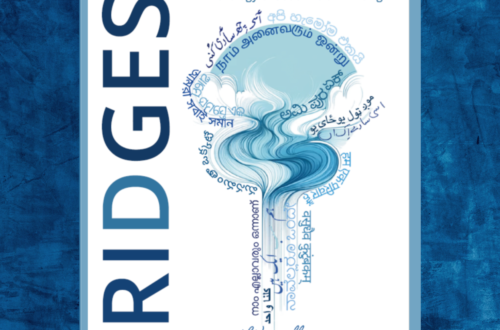Nisarg Patel
Recently announced as the winner of the 2024 Sahitya Akademi Award under the category of English Literature, Easterine Kire’s Spirit Nights (2022) tells a “story of darkness [as] narrated by the Chang Tribe” of Nagaland. On its surface, Kire’s narrative, as well as her narrative style, is quite simple. The novel begins with loud drumming coupled with a warning by one of its central characters, Tola, that a “Tiger has eaten the Sun! Tiger has eaten the sun” (1)and narrates the before, during, and after of this ‘unprecedented’ event that ushers in a “long period of darkness” (73). It hardly takes a page or two―and one suspects that it is Kire’s simplicity that assists her greatly in this―for the readers to be enchanted and get transported, sans resistance, into a vibrant universe filled with a multitude of characters, and their multi-generational stories, as they attempt at surviving the ‘state of exception’ that has descended upon their ‘River Rock’ (Shumang Laangyu Sang) village.
While the novel begins with Tola’s warning cries and ends with her leaving behind ‘this’ world for the next, Kire’s novel, merely 167 pages, succeeds in tracing multiple narrative trajectories. Beside Tola, there is Namu, Tola’s grandson, who shares the central place in the narrative and whose coming-of-age we witness as the story unfolds; Tola’s neighbors, the widower Beshang and Sungmo; the village head, Choba; and the village seer and Tola’s cousin, Chongsen. There, too, are spirits who labor beside humans to build the village drum, spirits who attack, and spirits who take away unnamed children. And then there are visitors who bring visions of the future and a tiger with seven tails. The boundaries between men and spirits, this world and the world beyond, are perforated, if not non-existent, at best, and Kire’s narrative moves effortlessly between the two.
The pleasures, and also the danger, of reading such narratives from “the frontlines of contemporary indigenous literature” (as the introduction to the author states), is that one becomes uncertain (as a non-native reader) where the fiction ends and the ethnography begins. From talking with cooking stones (41), burying the dead with seed-grains as preparation for their next life (8, 44), curing infertility by sleeping with grain stones tied to the belly (10), to the process of making long-drums which includes the village seer talking with the tree and obtaining its name (57-62), taboos over marriage with a person from another village (19), and post-delivery rituals (163), Kire offers quite a few detailed paragraphs, if not pages, of information on indigenous social life, rites, taboos, and rituals. For readers not well-versed in Naga histories―and I am one of them―such narratives run a risk of trading ‘words of fiction’ for ‘facts of life,’ turning the enchantments of indigenous life into a fetish that can conveniently fills the lack of disenchanted modern life. But then, here, the responsibility falls on the reader and not on the author.
Spirit Nights was first published in 2022, and one cannot miss overlaps between the ‘darkness’ that descended upon the Shumang Laangyu Sang and the one that engulfed the world in the wake of COVID-19. At a point in the narrative, the darkness intensifies, raising the risk to people’s lives in quite a drastic manner. Tola, who by that time has come to accept her unlikely role as a ‘women’ village seer, proclaims: “Don’t allow people to leave their houses. If they step outside, they could be attacked and killed” (91). Kire’s readers would have known a version of this very same message, and they would have known, too, the “intensified sense of isolation” that the ‘darkness’ brought (93). One wonders the extent to which the pandemic influenced Kire to write a story where a tiger eats the sun and death reigns―for if it did, it would make Spirit Nights also an important contribution to the emerging body of pandemic fiction beyond its essential place within the Indigenous fiction of North-East India.
Book Details:
Kire, Easterine. Spirit Nights, Simon and Schuster India, 2022. Pages 182, Paperback, ₹ 499.
ISBN: 978-9392099496
Nisarg Patel [નિસર્ગ પટેલ] is a PhD candidate in Comparative Literature at the University of Southern California. He writes and translates between Gujarati, Hindi, and English.




